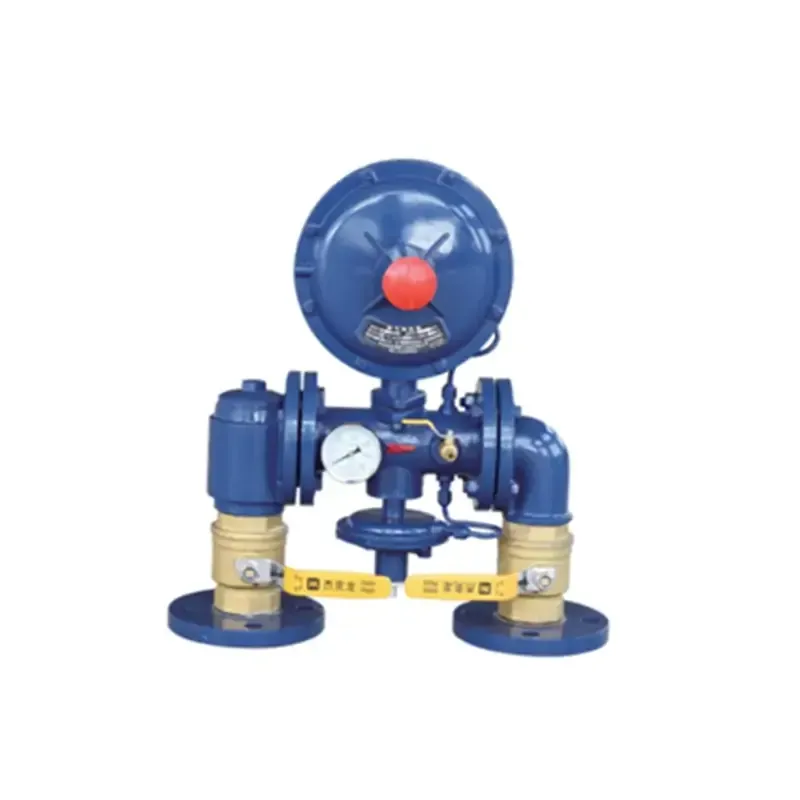
Oct . 30, 2024 14:36
Back to list
gas safety relief valve
Understanding Gas Safety Relief Valves A Crucial Component for Safety
Gas safety relief valves play a pivotal role in various industrial applications where gases are utilized. These valves are designed to regulate pressure and prevent the potential risks associated with gas overpressure, ensuring the safe operation of equipment and minimizing hazards.
The Purpose of Gas Safety Relief Valves
At its core, the gas safety relief valve is engineered to protect systems that transport or contain gases. When the pressure within a gas system exceeds a predetermined limit, the relief valve opens, allowing the excess gas to escape. This mechanism prevents catastrophic failures such as explosions or equipment ruptures, safeguarding both personnel and property.
How Gas Safety Relief Valves Work
Gas safety relief valves operate through a simple yet effective mechanism. They are pre-set to open at a specific pressure threshold, which is determined during the design and installation phase of the gas system. When the internal pressure rises to this threshold, the valve’s disc lifts off its seat, creating a passage for gas to vent. Once the pressure drops back to a safe level, the valve disc returns to its seat, sealing the system. This automatic response system is crucial for maintaining operational safety.
Types of Gas Safety Relief Valves
gas safety relief valve

There are various types of gas safety relief valves, including spring-loaded, pilot-operated, and balanced bellows types
. Spring-loaded valves use a spring mechanism to keep the valve closed until the set pressure is exceeded. Pilot-operated valves employ a secondary smaller valve to control the larger valve, providing increased accuracy and responsiveness. Balanced bellows valves are designed to handle different pressure mediums, ensuring reliability in fluctuating conditions. Each type serves its unique purpose and is chosen based on the specific requirements of the gas system in question.Importance of Regular Maintenance
Like all mechanical devices, gas safety relief valves require regular maintenance to ensure they function correctly. Scheduled inspections and testing are essential to prevent malfunctions that could lead to dangerous situations. Maintenance protocols typically involve checking for debris that might hinder the valve's operation, verifying the set pressure, and ensuring seals and gaskets are intact. Proper documentation during maintenance activities is also critical for compliance with safety regulations.
Regulations and Compliance
Adherence to safety regulations and industry standards is essential in the installation and operation of gas safety relief valves. Organizations such as the American Society of Mechanical Engineers (ASME) provide guidelines that serve as benchmarks for safety practices. Compliance with these regulations not only ensures safe operation but also minimizes liability and promotes a culture of safety within organizations.
Conclusion
In summary, gas safety relief valves are vital components in the safe handling of gases across various industries. Their ability to prevent overpressure events is crucial in protecting both human lives and physical assets. With proper selection, installation, and maintenance, these valves can significantly contribute to the safety and efficiency of gas systems, making them indispensable in today's industrial landscape. Prioritizing the safety of operations by understanding and respecting the functions of gas safety relief valves can lead to more reliable and secure working environments.
Next:
Latest news
-
Safety Valve Spring-Loaded Design Overpressure ProtectionNewsJul.25,2025
-
Precision Voltage Regulator AC5 Accuracy Grade PerformanceNewsJul.25,2025
-
Natural Gas Pressure Regulating Skid Industrial Pipeline ApplicationsNewsJul.25,2025
-
Natural Gas Filter Stainless Steel Mesh Element DesignNewsJul.25,2025
-
Gas Pressure Regulator Valve Direct-Acting Spring-Loaded DesignNewsJul.25,2025
-
Decompression Equipment Multi-Stage Heat Exchange System DesignNewsJul.25,2025

